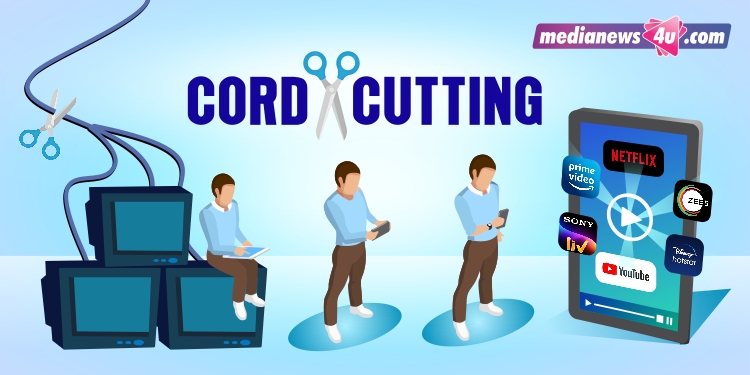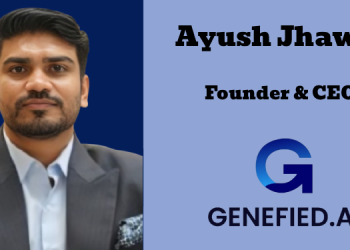At a kirana store in Kodambakkam, Chennai, a small colour TV set used to play soaps and religious channels from dawn to dusk until recently. The owner says he and his co-owner wife shifted to watching content on YouTube on the mobile, as the monthly tariff went up to Rs.350 for his cable TV connection and he wasn’t interested in all the channels offered in the package. Similar instances are perhaps not uncommon, whether in households or kiranas in Khar Danda in Mumbai, or Halasuru in Bengaluru.
This was happening even before NTO 3.0 kicked in on 1 February 2023, when broadcasters were allowed by the sector regulator to increase the price of channels that are part of a bouquet from Rs. 12 to Rs. 19. According to the Indian Broadcasting and Digital Foundation, a body of television broadcasters, almost 80pc of distribution operators have agreed to the latest NTO. Broadcasters themselves see the hike as an “overdue correction”. Several distributors do not agree. AIDCF (All India Digital Cable Federation) members have gone to court. A final Kerala High Court order is listed for 8 February 2023.
Irrespective, cord cutting is a reality, with cost being a (dis)incentive.
Are people moving away from cable and DTH? If yes, is cost the driver?
Medianews4u.com asked media experts to weigh in.
‘One will have to wait and watch’

“I think it’s quite complicated. While the price hike was kind of inevitable with an increase in input costs, at the same time the fact is we as a country are so price sensitive, and that kind of coupled with the current environment could become a deterrent for consumers. Free platforms like Free DTH and digital platforms are already eating into the pay share of content, which makes this transition trickier. However, broadcasters too have invested significantly on creating and on the delivery of world class content, and with the spectrum of content which is available to the pay broadcasters ranging from GEC to movies to sports, these will definitely be exciting times to look forward to. I guess one will have to wait and watch on how the landscape evolves.”
– Raj Nayak, Managing Director, House Of Cheer Networks.
‘Expect hybrid model to evolve in future’

While India is a price-sensitive market, there are many other drivers that have, over the years, moved viewership to digital: appointment viewing, both the young and old now wanting to catch entertainment or sports or news on the go, ease of availability and accessibility through apps. Plethora of choice in digital content availability and increased bandwidth are just some of the factors.
However, broadcasters are realigning to this new trend by parallelly pushing content delivery through digital as well. Even MSOs and DTH platforms are evolving through technology to meet this need – examples being hybrid set top boxes and providing triple-play options to a single home.
Also given that a majority of the Indian viewership still comes from rural India and the fact that ease, less stress and speed of making a choice of what to watch still lies with cable and DTH, we can expect a hybrid model to evolve in the future.
With the advent of 4G and 5G in the near future, the mode of viewing will change through connected and Smart TV. Linear TV is still going to be around, as we also see more C&S being added to the mix from tier 3/4 towns which will drive growth for traditional distribution platforms.
– Priya Mukherjee, Group President – Network Development, India TV
‘People churn out because of changes in viewing behaviour’

Traditional (TV) businesses have had a massive churn in the subscriber base in the last few years. Since 2019, the first big hit happened during NTO 1.0, then it was Covid and then things kept adding on which led to general erosion of numbers on traditional business, both cable and DTH. The fundamental viewing habits in the last four years have also changed. For example, if you take 200 million homes with TV in this country, currently it is down to approximately 110 million, and let’s take FreeDish as 50 million, we still have a gap of about 40 million unexplained numbers.
The reality is, in the last four years people have churned out of cable and DTH. Pricing may have a little bit of a role but majorly it’s the behaviour pattern of people changing. One fundamental big change is that people are spending six to nine hours on alternate screens. They are watching so much of YouTube and few apps (Hotstar, Netflix or Amazon Prime, the ones they have subscribed to), that linear is no more needed. There is also a fundamental on-demand situation, to watch everything when you want and the cable and DTH doesn’t satisfy that ecosystem.
The biggest gamechanger to the lower economic group is FreeDish, especially in North of India and YouTube in the first place. It’s the best ocean today that people would like to sail on and you can’t compete with that. And if social media is added on top of that like Instagram Reels, Whatsapp etc. – any type of engagement with any audio visual medium – then linear is bound to fall.
The linear ecosystem is falling all over the world and there is no drastic change for India. In some cases like the US it is because of pricing but in other cases it’s just the convenience and change of behaviour. Also, in the last three years, the prices of broadband has crashed. The moment all broadband plans moved to unlimited data, the world changed.
Finally, there is a concept of ‘cord never’. People talk about ‘cord cutting’ but there is a phenomenon of ‘cord never’ and India has also seen that. Especially GenZ who are starting their job and moving out or getting married and moving out, they are not even taking a cable and DTH connection. Nowadays when people move to a new place they too opt out of taking the connection.
In India, the business is large. When we say cable and DTH will lose, even if they lose 10pc of 105 million there are still 90 million homes. It’s not a small market. It is still a very big market which cannot be ignored but it is not growing.
– Anuj Gandhi, Former Group CEO, IndiaCast
‘Ceaseless drop in Cable and Satellite (C&S) homes’

If we were to go by the last consecutive findings from the Chrome DM Subscriber Establishment Survey (SES), we witness a ceaseless drop in Cable and Satellite (C&S) homes from 185 million to just over 165 million households since 2020. However, the reason behind this substantial drop is more than just rising subscription costs. An integral one being the digital transition from linear viewing to active online consumption, be it on YouTube or OTT. This ‘vibe shift’ should come as no shock to anyone from the cable and broadcast industry. The much-talked about phenomenon has seen another bifurcation amongst this viewing class, namely cord-cutters and cord-trimmers.
As these streaming platforms evolve, it is essential to understand the incremental reach (Digital as a percentage of Cable & Satellite) that allows publishers/advertisers to seize and capture an appeal with a huge, engaging audience. For example, the incremental reach for Aaj Tak across all platforms i.e, Smart TVs (YouTube, apps, browsers etc.) and Smartphones (YouTube, OTT, native apps, browsers etc.) and operating systems (Android, Tizen), reached over 79pc during the month of December ’22!
The rise of OTT is inevitable at this point. One key factor being the superior content library that eclipses the daily soaps on routine televised slots. Consumers are increasingly becoming more susceptible to the quality-over-quantity model offered through various content online, which has since gained massive traction across rural and urban pockets in India. The dubbing aspect has further driven the OTT market. It maintains a tested approach for media companies to localise an aspect within the ecosystem for an entirely new demographic. The ‘Pan-Indian’ wave has also jump-started the rising demand for content from the southern markets across Hindi- speaking belts.
– Pankaj Krishna, Founder & CEO, Chrome DM.

















